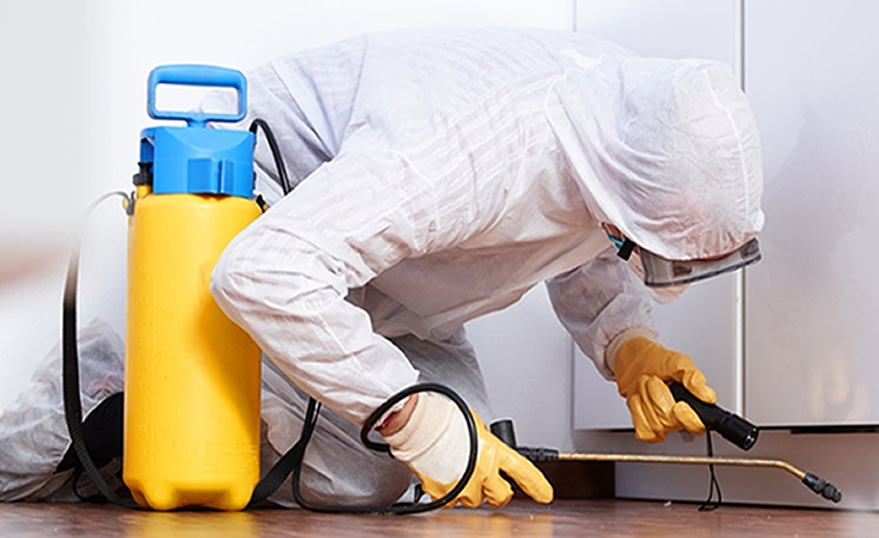Professional Parasite Control Techniques for Long-Term Outcomes
In the realm of pest control, attaining sustained efficacy and lasting results requires a meticulous method that transcends plain extermination. Specialist insect control strategies encapsulate a thorough technique that starts with an extensive examination and evaluation, adhered to by precise bug recognition to comprehend their habits patterns. The execution of Integrated Insect Monitoring (IPM) principles, combined with eco-conscious therapies, forms the foundation of lasting pest removal. Nonetheless, real test lies in the continuous surveillance and maintenance of the treated locations, making sure a pest-free setting for the foreseeable future. By delving into the ins and outs of these strategies, a much deeper understanding of professional parasite control methods for enduring outcomes emerges.
Evaluation and Assessment
Upon entering a home for insect control services, the initial action is a detailed examination and evaluation to determine the extent of the problem and establish one of the most effective therapy strategy. Expert insect control service technicians are trained to carefully analyze the premises, seeking indicators of insect activity such as droppings, munch marks, nests, or any kind of structural damage. They will certainly also analyze the problems that may be bring in bugs, such as food sources, water leaks, or access factors.

Bug Recognition and Actions

In addition, comprehending the actions of the determined parasite is crucial to implementing efficient control measures. Understanding where parasites nest, what they feed on, and their activity patterns can assist pest control professionals develop approaches to eradicate them successfully.
Integrated Insect Monitoring (IPM)
Integrated Pest Administration (IPM) strategies integrate numerous techniques to manage and stop pest invasions in a lasting and eco-friendly fashion. bed bug heat treatment. By incorporating approaches such as organic control, habitat manipulation, adjustment of social techniques, and using immune varieties, IPM aims to reduce making use of chemical pesticides
Among the essential concepts of IPM is the focus on prevention. This positive strategy involves monitoring insect populations frequently to find pest guys any kind of potential issues prior to they rise. By recognizing pest problems at an early stage, pest control steps can be executed quickly and efficiently.
Additionally, IPM promotes the use of non-toxic pest control approaches whenever feasible. This can consist of using all-natural predators of the insects, introducing advantageous insects, or using pheromones to interfere with breeding patterns. By lowering dependence on chemical pesticides, IPM not just safeguards the environment but additionally aids preserve a balance in the ecosystem.
Environmentally-Friendly Therapies
Applying eco-conscious strategies in pest control treatments can successfully deal with infestations while focusing on ecological sustainability. Environmentally-friendly therapies concentrate on decreasing the influence of bug control techniques on environments, non-target organisms, and human wellness. These techniques frequently entail making use of natural killers, such as ladybugs or nematodes, to control pest populaces, decreasing the demand for chemical treatments. Additionally, methods like habitat adjustment, such as adjusting dampness levels or getting rid of food sources, can assist discourage bugs without the use of hazardous substances.
An additional secret aspect of environmentally-friendly treatments is making use of natural and naturally degradable items that damage down rapidly without leaving unsafe residues in the atmosphere. Organic pesticides derived from plants like chrysanthemums or neem use reliable pest control while positioning very little threat to non-target species. Using approaches like heat treatments or pheromone traps can target particular insects with accuracy, minimizing the general ecological influence of parasite control techniques.
Recurring Surveillance and Upkeep
Continual surveillance and upkeep are important components of effective pest control management. Ongoing monitoring plays an essential role in guaranteeing that pest infestations are detected very early and managed immediately. Routine evaluations by qualified professionals are necessary to recognize any kind of indications of insect task, analyze the efficiency of previous treatments, and make adjustments to the parasite control strategy as needed. By monitoring parasite populations over time, parasite control professionals can try this out track trends, anticipate possible issues, and implement safety nets to minimize the threat of future invasions.
Along with tracking, upkeep techniques are essential for lasting bug control success. This includes implementing proper hygiene procedures to eliminate possible food and water resources for pests, securing off entry factors to avoid bugs from going into the facilities, and attending to any kind of architectural concerns that Clicking Here can promote insect problems (bed bug treatment). By incorporating ongoing monitoring and upkeep right into an incorporated bug administration technique, companies can guarantee a pest-free environment and safeguard their residential or commercial property against pricey damages and health and wellness dangers
Conclusion
In conclusion, making use of expert insect control techniques such as thorough examination and analysis, precise pest recognition and understanding of their habits, integrated parasite administration techniques, environmentally-friendly treatments, and recurring monitoring and upkeep are necessary for accomplishing lasting outcomes in insect control. By applying these techniques, individuals can successfully manage parasite invasions and maintain a pest-free atmosphere in a sustainable way.